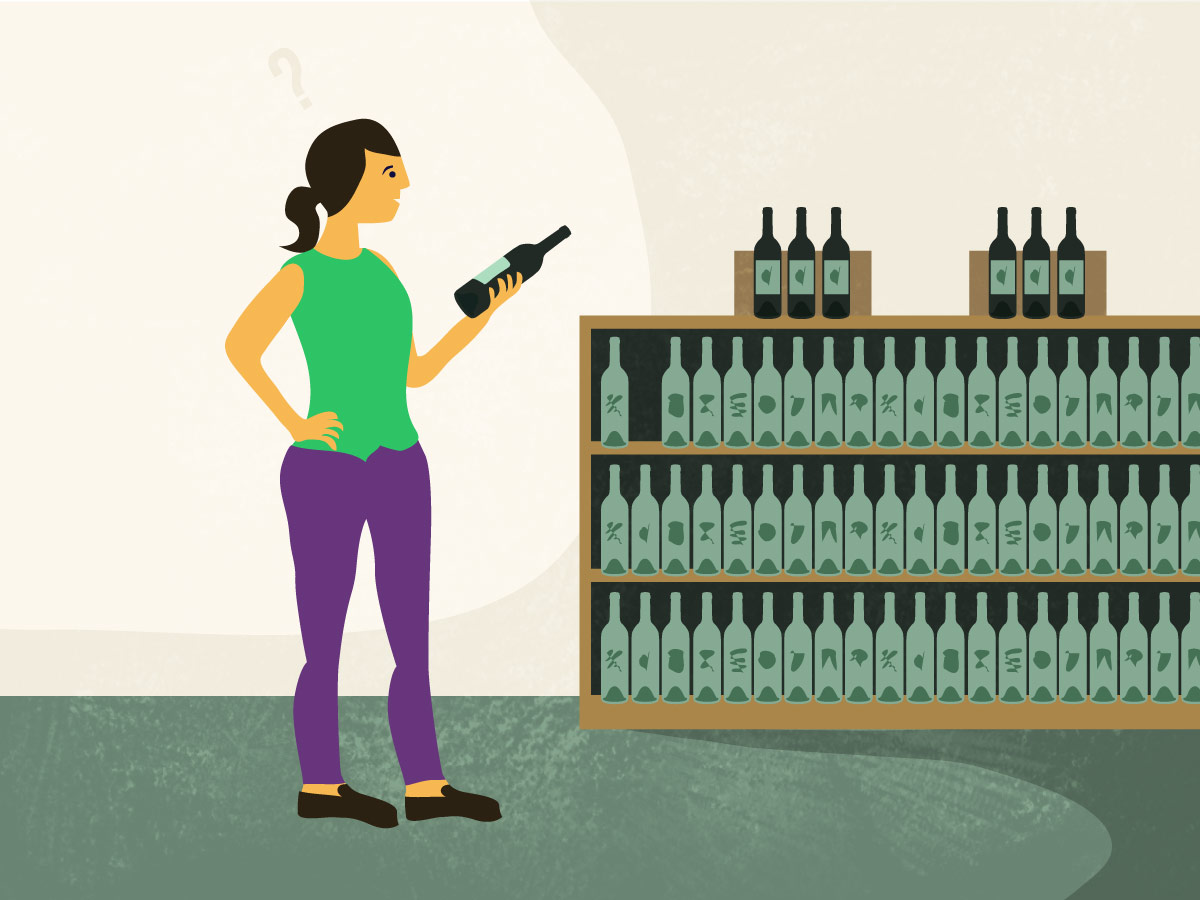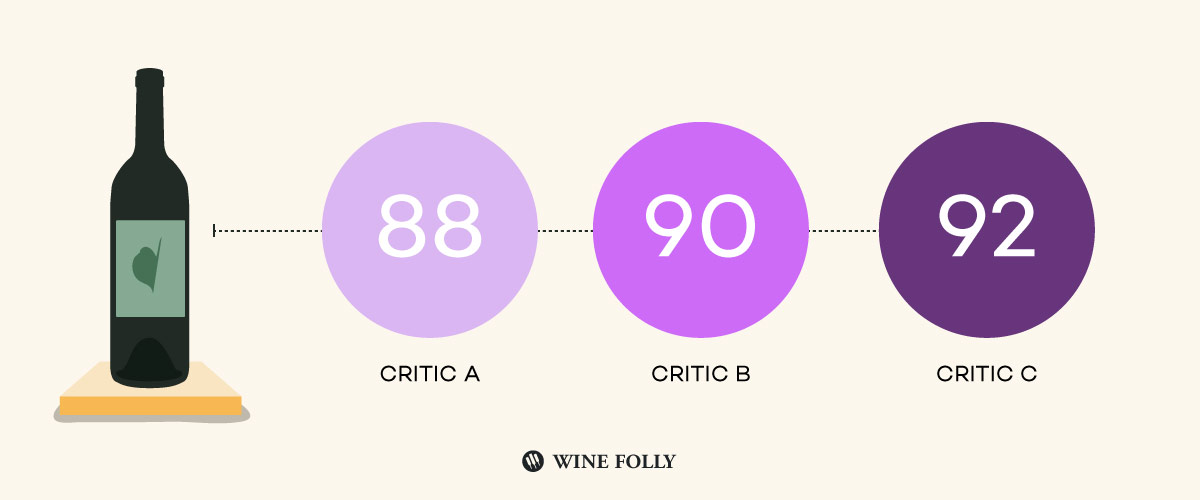The 100-point wine rating system has become the benchmark of quality in the wine industry. If you have ever looked around for good value ’90-point’ wine, then you have used ratings. The system does rate some aspects of wine quite well, including production quality, but there are a few inconsistencies that you should know about in order to shop smart.
See how wine ratings work, know their shortcomings, and then get a few pragmatic solutions that will improve how you buy wine.
A Pragmatic Approach to Wine Ratings
How Wine Ratings Came to Be
Wine Ratings were first popularized in the 1980’s by one writer who went against the grain to rate wines for consumers. His name was Robert Parker. Today, Parker is the most recognized wine critic and his 100-point system is generally considered the standard scale by which the critics rate wine.
Wine Ratings Explained
Wine ratings don’t necessarily indicate how delicious a wine is. Instead, wines are scored based on production quality and typicity. Typicity is how much the traits of a particular wine ‘typify’ the style and region it’s from.
The 100-point Scale
How Wine Ratings Are Like Dog Shows
- The winning dog is the one that most typifies its breed.
- If a dog has unique markings or funny legs not typical for the breed, it won’t be rated as high.
The 100-point scale actually starts at 50 points (and some raters never include wines below 80):
- 50-59 wines are flawed and undrinkable
- 60-69 wines are flawed and not recommended but drinkable
- 70-79 wines are flawed and taste average
- 80-84 wines are ‘above average’ to ‘good’
- 85-90 wines are ‘good’ to ‘very good’
- 90-94 wines are ‘superior’ to ‘exceptional’
- 95-100 wines are benchmark examples or ‘classic’

It’s interesting to see that the average rating is a bell curve around 87-89 points.
The Problems With Wine Ratings
Problem #1: Critics have different opinions
While experienced critics can easily agree on production quality of a wine, they start to disagree with each other when wines get into the 90+ range. There are basically two schools of thought when it comes to grading wines in the 90+ category:
- The critics who prefer wines that are complex and bold
- The critics who prefer wines that are complex and subtle
Solution: Size up the source
If you’re going to buy based on ratings, you should look into the source. Some critics are known for typically giving lower ratings to wines than other critics do. It’s good to know this, because you might really like an 87-88 point wine that you wouldn’t have normally considered.
Problem #2: Equally rated wines from different regions taste very different
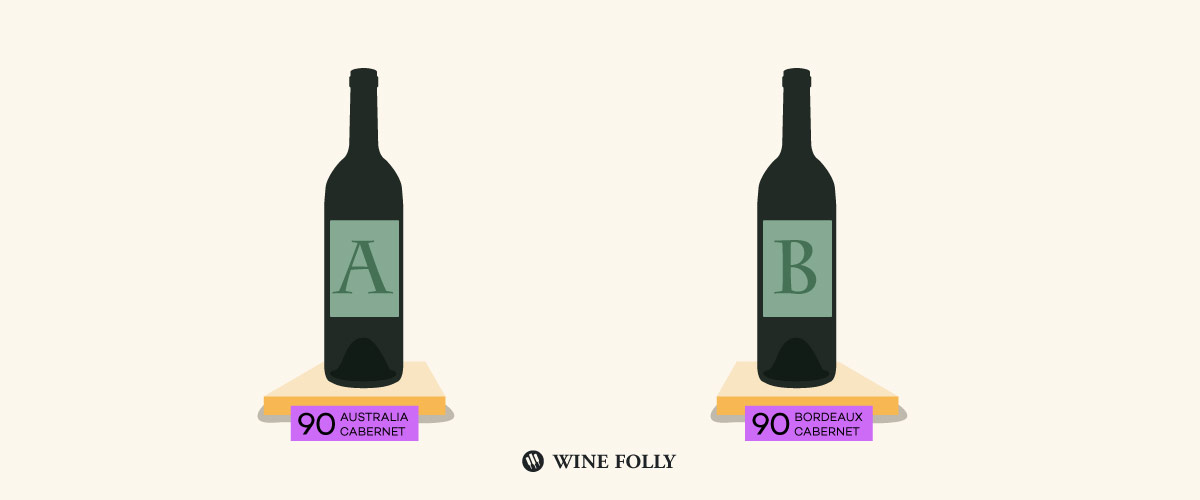
If you love Napa Sauvignon Blanc and buy an equally rated Pouilly-Fumé –a Sauvignon Blanc from France– the rating doesn’t guarantee you’ll like it. This is because each region tastes remarkably different.
Solution: Use ratings to just regions you know
The best way to consistently buy wine you like is to learn about what you like and why. Ratings can help you find quality wines from new regions but you’ll have to do your own leg work to read in between the lines to factor in personal style. Start learning about the wine regions you like and go beyond just scores.
Check out:
Develop your palate by Learning to Actively Taste Wine
Problem #3: There is more unrated wine than rated wine
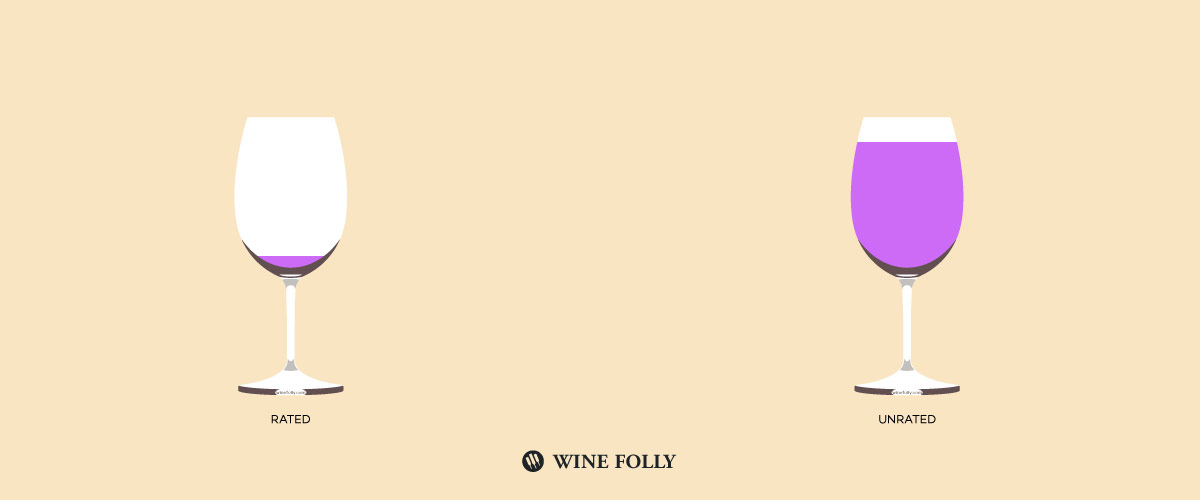
Some individual wine critics will taste up to 700 wines in just a few days and Wine Spectator rates a whopping 16,000 wines a year. While these numbers are astounding, they are a drop in the bucket of all the unique wines that come out each year, every year.
Solution: Don’t worry if the wine isn’t rated
If you’re trying to decide between 2 equal looking wines and one is rated and the other is not, that doesn’t necessarily mean the rated wine is better.
Problem #4: Low ratings are never published
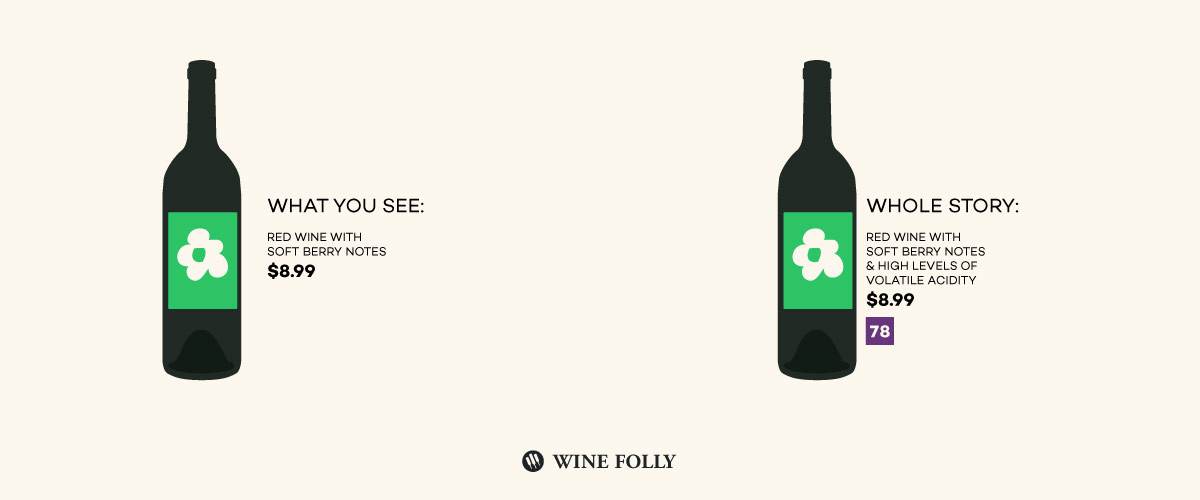
When was the last time you saw a wine on the shelf that proudly stated “79-points!” While low ratings do exist, you’ll never see them. It’s not easy to freely look up this information because wine rating sites charge for access. The reason for this is because retailers are willing to pay for access to ratings in order to sell wine.
Solution: Use alternative resources for opinions
One alternative tool is to look at crowd sourced rating sites like cellartracker.
Problem #5: Each site’s rating scale is slightly different

If you actually go to the trouble to look up all the major wine rating sites’ standards, you’ll see that the numbers above are not a standard. Each reviewer weighs their point scale slightly differently. A perfect example of where this goes wrong is below:
- Wine & Spirits Magazine says: 86 to 89 — highly recommended
- Wine Enthusiast Magazine says: 85-89 — Very good. May offer outstanding value if the price is right.
‘Highly recommended’ sounds much more appealing to ‘very good… if the price is right.’ Who would have thunk that an 89-point wine from W&S should carry more value than an 89-point wine from WE.
Solution: We need a standard rating system.
Let’s get everyone together and standardize this.
Problem #6: Ratings shape the growth of regions

If you’re a winemaker and your neighbor gets a 100 point rated wine, then you might start emulating them to grow your business. While this isn’t a bad thing, it does cause homogeny over time in a wine region. Homogenous agricultural regions are highly susceptible to problems like disease, drought or economic downturn when market preference changes.
Solution: Drink outside the box
Never stop exploring new wines, you can start by looking at an infographic that arranges wine by taste.
Conclusion
Wine ratings can be very useful when paired with your ability to be curious and seek more knowledge.
